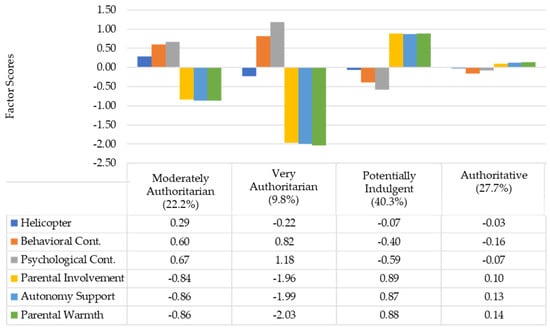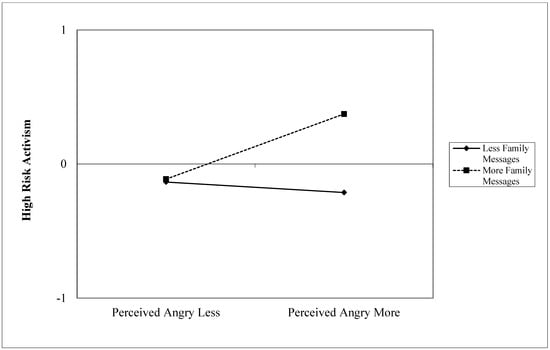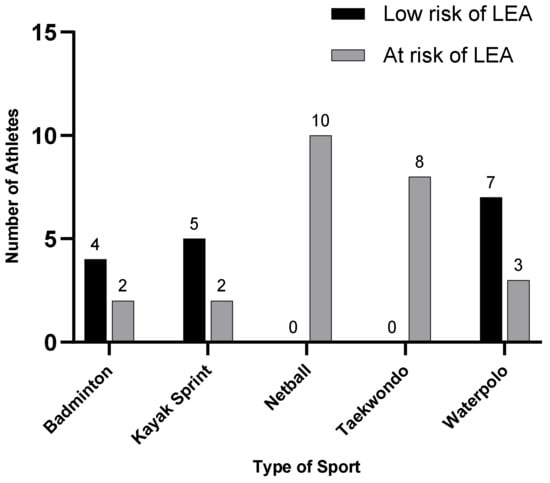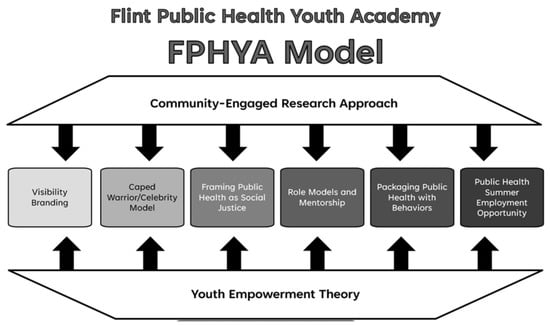-
 Supporters with Vantage Position: The Role of Youth Work in the Online Lifeworld from the Perspective of Adolescents and Youth Work’s Partners
Supporters with Vantage Position: The Role of Youth Work in the Online Lifeworld from the Perspective of Adolescents and Youth Work’s Partners -
 Charting the 21st Century Rise of For-Profit Residential Child Care
Charting the 21st Century Rise of For-Profit Residential Child Care -
 Social Media Addiction, Personality Factors and Fear of Negative Evaluation in a Sample of Young Adults
Social Media Addiction, Personality Factors and Fear of Negative Evaluation in a Sample of Young Adults
Journal Description
Youth
Youth
is an international, peer-reviewed, open access journal on education, sociology, economics, cultural studies and other social perspectives of youth and young adulthood published quarterly online by MDPI.
- Open Access— free for readers, with article processing charges (APC) paid by authors or their institutions.
- Rapid Publication: manuscripts are peer-reviewed and a first decision is provided to authors approximately 24.6 days after submission; acceptance to publication is undertaken in 4.8 days (median values for papers published in this journal in the second half of 2023).
- Recognition of Reviewers: APC discount vouchers, optional signed peer review, and reviewer names published annually in the journal.
Latest Articles
The Work of Youth Homelessness Prevention in Ontario: Points of Frustration, Points of Potential
Youth 2024, 4(2), 567-581; https://doi.org/10.3390/youth4020039 - 23 Apr 2024
Abstract
Despite a rhetorical turn towards prevention in homelessness policy and research, the work of youth homelessness prevention continues to be frustrated by persistent structural barriers. In this article, we examine how youth homelessness prevention is being implemented in the province of Ontario, with
[...] Read more.
Despite a rhetorical turn towards prevention in homelessness policy and research, the work of youth homelessness prevention continues to be frustrated by persistent structural barriers. In this article, we examine how youth homelessness prevention is being implemented in the province of Ontario, with a focus on targeted provincial support programs and local shelter diversion practices. Drawing on interviews with workers in the homeless-serving sector, we describe the implementation of these initiatives and identify points of frustration and potential that workers encounter as they try to prevent experiences of homelessness for youth. We contend that these points of frustration illuminate persistent structural barriers that continue to forestall the work of youth homelessness prevention. Meanwhile, points of potential demonstrate the importance of empowering workers to creatively adapt and offer responsive services. Taken together, these signal the critical importance of two aspects of contemporary homelessness prevention typologies—primordial prevention and empowerment. We end by offering aspirations for action, a political reframing of the policy recommendations sections more typical of social science research articles. We do so to affirm our commitment to advancing the work of structural transformation that is required to achieve the right to housing for all, including youth.
Full article
(This article belongs to the Special Issue Youth Homelessness Prevention)
Open AccessArticle
Adolescents Spending Time with Their Parents: Does It Matter?
by
Ina Koning and Carmen Voogt
Youth 2024, 4(2), 556-566; https://doi.org/10.3390/youth4020038 - 22 Apr 2024
Abstract
The current study aims to explore the relevance of ‘time spent with parents’ for different risk behaviors (i.e., alcohol use, smoking, gambling and problematic social media use), peer factors (i.e., time spent with peers, peer pressure and peer support) and parenting behaviors (i.e.,
[...] Read more.
The current study aims to explore the relevance of ‘time spent with parents’ for different risk behaviors (i.e., alcohol use, smoking, gambling and problematic social media use), peer factors (i.e., time spent with peers, peer pressure and peer support) and parenting behaviors (i.e., control, relatedness and family support). A cross-sectional design was employed, including 2165 adolescents aged from 12 to 18 years (Mage = 14.7, SD = 1.33; 52% girls; 30% in pre-vocational education). Independent sample t-tests were performed to compare different contrasting groups (≤1 h vs. >1 h; ≤2 h vs. >2 h; ≤3 h and >3 h) for relevant outcomes. Results. Adolescents spending on average >1 h per day with their parents in joint activities reported lower levels of risk behavior, less peer pressure, more peer support and more parental control, relatedness and family support. At the same time, this does not seem to come at the expense of spending time with peers, as adolescents spending 1 h or more with their parents did not spend less time with their peers. All the findings point at the relevance of parents spending time and undertaking joint activities with their adolescent children.
Full article
(This article belongs to the Special Issue Parent-Child Relationships in Adolescence and Young Adulthood)
Open AccessArticle
Sociopolitical Development among Latinx Child Farmworkers
by
Parissa J. Ballard, Stephanie S. Daniel, Taylor J. Arnold, Jennifer W. Talton, Joanne C. Sandberg, Sara A. Quandt, Melinda F. Wiggins, Camila A. Pulgar and Thomas A. Arcury
Youth 2024, 4(2), 540-555; https://doi.org/10.3390/youth4020037 - 18 Apr 2024
Abstract
The objectives of the present study were to describe civic attitudes and behaviors among Latinx child farmworkers in North Carolina, examine civic outcomes across relevant demographic characteristics, and discuss the implications for research on sociopolitical development among Latinx child farmworkers and for developmental
[...] Read more.
The objectives of the present study were to describe civic attitudes and behaviors among Latinx child farmworkers in North Carolina, examine civic outcomes across relevant demographic characteristics, and discuss the implications for research on sociopolitical development among Latinx child farmworkers and for developmental theory. Descriptive statistics (count, percent, or mean, standard deviation as appropriate) were calculated for demographic and civic variables. Associations between the demographic variables and the four civic summary variables were calculated using Generalized Linear Models, the Kruskal–Wallis test, t-tests, or Chi-Square tests. Latinx child farmworkers in North Carolina (N = 169; ages 11–19, Mage = 15.8, 62.7% boys) endorsed relatively high levels of beliefs that society is fair and connections/efficacy in their communities. They reported relatively low involvement in volunteering and political activity. Future work should examine how the daily lives and experiences of child farmworkers inform their developing ideas about civic life in the US and their behavioral participation as they mature.
Full article
(This article belongs to the Special Issue Youth Sociopolitical Action: Costs, Benefits, and Supporting Sustainable Sociopolitical Practices)
Open AccessArticle
Encounters with Care in a Scottish Residential School in the 1980s
by
Mark Smith
Youth 2024, 4(2), 525-539; https://doi.org/10.3390/youth4020036 - 15 Apr 2024
Abstract
The meaning of care in residential child care is under-developed. It can often be represented through its absence, seen as offering at best basic physical tending but lacking emotional connection or warmth. At worst, residential care settings said to be institutionally abusive can
[...] Read more.
The meaning of care in residential child care is under-developed. It can often be represented through its absence, seen as offering at best basic physical tending but lacking emotional connection or warmth. At worst, residential care settings said to be institutionally abusive can be characterised as being antithetical to what we might imagine care should be. Residential schools and especially those run by religious orders attract particular opprobrium in this regard. In this article, I adopt a broadly autoethnographic approach to reflect on how boys (now men in their late 40s and early 50s) brought up in the 1980s in a Scottish residential school recall being cared for. The article uses Axel Honneth’s theory of recognition and its three pillars of love, rights and solidarity to group themes from how former pupils speak about their experiences of care. These accounts challenge the received narrative of such settings failing to offer care. The discussion reflects some ideas around care and about how we understand public care historically.
Full article
(This article belongs to the Special Issue Residential Care of Children and Young People)
Open AccessArticle
Parenting Styles in Emerging Adulthood
by
Michaeline Jensen, Jessica L. Navarro, Gregory E. Chase, Kacey Wyman and Melissa A. Lippold
Youth 2024, 4(2), 509-524; https://doi.org/10.3390/youth4020035 - 12 Apr 2024
Abstract
Parents/caregivers remain important in the lives of emerging adults in the modern era and understanding the ways in which parents of emerging adults balance responsiveness, demandingness, and autonomy support can help inform evidence-based recommendations around developmentally appropriate protective parenting. The present study identified
[...] Read more.
Parents/caregivers remain important in the lives of emerging adults in the modern era and understanding the ways in which parents of emerging adults balance responsiveness, demandingness, and autonomy support can help inform evidence-based recommendations around developmentally appropriate protective parenting. The present study identified four “parenting styles” in emerging adulthood in a sample of 680 4-year university and community college students (M = 19.0, ranging from 18 to 25; 70.7% female, 22.6% male) who reported on their primary parent/caregiver’s parenting behaviors. These parenting styles largely overlapped with traditional conceptualizations of parenting styles (two authoritarian profiles, a potentially indulgent profile, and a profile characterized by the average levels of all parenting behaviors measured, which may reflect the modern authoritative parenting style of emerging adults). No hypothesized overparenting profile emerged. The potentially indulgent profile saw the lowest levels of depression, mood, and anxiety symptoms, whereas the potentially indulgent and authoritative profiles saw the most positive wellbeing outcomes. The findings underscore the way in which responsiveness and autonomy support in emerging adulthood appear developmentally appropriate and adaptive, and how helicopter parenting does not appear to be as important as other aspects of parent–emerging adult relationships.
Full article
(This article belongs to the Special Issue Parent-Child Relationships in Adolescence and Young Adulthood)
►▼
Show Figures

Figure 1
Open AccessArticle
The Impact of Fourteen Years of UK Conservative Government Policy on Open Access Youth Work
by
Bernard Davies
Youth 2024, 4(2), 492-508; https://doi.org/10.3390/youth4020034 - 07 Apr 2024
Abstract
This article reviews the impacts of the UK Conservative Party’s government policies on ‘open access youth work’ since 2010, giving particular attention to the period since 2018 and to impacts in England. After clarifying the practice’s distinctive features, it outlines the ‘austerity’ demolition
[...] Read more.
This article reviews the impacts of the UK Conservative Party’s government policies on ‘open access youth work’ since 2010, giving particular attention to the period since 2018 and to impacts in England. After clarifying the practice’s distinctive features, it outlines the ‘austerity’ demolition of its local provision and—amid continuing wider financial pressures—changes in the role and contributions of the voluntary youth sector. It lists a range of ‘gesture’ funds for financing responses to young people’s needs and interests as the government has defined them and uses the Youth Investment Fund (YIF) as a case study of how this money has been made available and allocated. Initiatives taken by the Department of Digital, Media, Culture and Sport (DCMS) are then examined: its Youth Review, National Youth Guarantee, review of the statutory guidance to local authorities, and support for ‘youth volunteering’. Two key developments are then considered that, by early 2024, were diverting and inhibiting an even partial sustained reinstatement of the lost open access youth work facilities. One, at the policy level, is the redefinition of ‘youth work’ by governments and by some within the youth work sector itself as a wide range of out-of-school practices with young people; the other, at the point of delivery, is the on-going difficulties in recruiting youth workers, especially those with direct practice experience. Finally, two possible tentative suggestions for some reinstatement of open access youth work provisions are then discussed.
Full article
(This article belongs to the Special Issue Beyond Youth Development: Generating Alternative Narratives of Change in Youth Work)
Open AccessArticle
Self-Regulation as a Protective Factor against Bullying during Early Adolescence
by
Christopher Williams, Kenneth W. Griffin, Caroline M. Botvin, Sandra Sousa and Gilbert J. Botvin
Youth 2024, 4(2), 478-491; https://doi.org/10.3390/youth4020033 - 01 Apr 2024
Abstract
Self-regulation has been shown to play a protective role against youth substance abuse, but less is known about its influence on bullying behavior. In the present study, we examined several forms of bullying (physical, social, cyber, and all forms combined) and roles (bullies,
[...] Read more.
Self-regulation has been shown to play a protective role against youth substance abuse, but less is known about its influence on bullying behavior. In the present study, we examined several forms of bullying (physical, social, cyber, and all forms combined) and roles (bullies, victims, and bully-victims). Students (N = 1977, ages 11 to 13) from 27 middle schools throughout the United States (US) completed an online self-reported assessment of bullying and its hypothesized etiologic determinants. Across the outcomes, analyses revealed that social bullying was most prevalent, followed by physical bullying and cyberbullying. For bullying roles, almost two-thirds of students reported bullying victimization, nearly one-quarter reported bullying perpetration, and one in five students reported both. Of those reporting perpetration, 9 of 10 reported being victimized. Multivariate logistic regression models were used to examine the associations between self-regulation, bystander intervention skills, and bullying. For all forms of bullying combined, self-regulation was protective against bullying perpetration (OR 0.51, 95% CI: 0.42, 0.63) and perpetration/victimization (OR 0.55, 95% CI: 0.44, 0.68), while bystander intervention skills were not protective. Similar patterns emerged for physical, social, and cyberbullying. Collectively, these findings indicate that building self-regulation skills may be a critical component of interventions aimed at preventing bullying among school-aged youth.
Full article
(This article belongs to the Special Issue Promoting Resilience, Wellbeing, and Mental Health of Young People)
Open AccessArticle
A Quantitative Investigation of Black and Latina Adolescent Girls’ Experiences of Gendered Racial Microaggressions, Familial Racial Socialization, and Critical Action
by
Taina B. Quiles, Channing J. Mathews, Raven A. Ross, Maria Rosario and Seanna Leath
Youth 2024, 4(2), 454-477; https://doi.org/10.3390/youth4020032 - 01 Apr 2024
Abstract
As Black and Latina adolescent girls experience race and gender discrimination, they may turn to their families to explore their beliefs about and responses to systemic injustice and oppression. Familial racial socialization is a likely entry point for critical action (like community activism),
[...] Read more.
As Black and Latina adolescent girls experience race and gender discrimination, they may turn to their families to explore their beliefs about and responses to systemic injustice and oppression. Familial racial socialization is a likely entry point for critical action (like community activism), linking ethnic–racial identity and critical consciousness in youth development. We used hierarchical linear regression to investigate whether familial racial socialization moderated the relationship between experiences of gendered racism and community activism. We analyzed survey data for 315 Black (n = 158) and Latina/Afro-Latina (n = 157) girls (n = 282) and gender expansive youth (age 13–17) from the southern United States. We found that girls who received more familial socialization and were more frequently stereotyped as being angry participated in more low-risk and formal political activism. Also, Black and Latina girls who were more frequently stereotyped as angry and received more messages about racism from their families engaged in more high-risk activism, while girls who were more frequently perceived as angry and received less racial socialization engaged in less high-risk activism. We discuss the implications of our results for families, educators, and scholars who support Black and Latina girls’ sociopolitical development.
Full article
(This article belongs to the Special Issue Youth Sociopolitical Action: Costs, Benefits, and Supporting Sustainable Sociopolitical Practices)
►▼
Show Figures

Figure 1
Open AccessArticle
Low Energy Availability and Eating Disorders Risk: A Comparison between Elite Female Adolescent Athletes and Ballet Dancers
by
Jamie Ching Ting Lye, Tin Wing Chan, Harry Ban Teck Lim, Jing Wen Png and Bernadette Cherianne Taim
Youth 2024, 4(2), 442-453; https://doi.org/10.3390/youth4020031 - 29 Mar 2024
Abstract
►▼
Show Figures
This study examined the risk of low energy availability (LEA) and eating disorders among elite adolescent female athletes from a mixed-sport cohort and ballet dancers in Singapore, where the accelerated biological needs of adolescent growth and maturation overlap with the pursuit of sport/ballet
[...] Read more.
This study examined the risk of low energy availability (LEA) and eating disorders among elite adolescent female athletes from a mixed-sport cohort and ballet dancers in Singapore, where the accelerated biological needs of adolescent growth and maturation overlap with the pursuit of sport/ballet excellence and high-stakes academic testing. All of these are competing demands for adequate fuelling and seeking timely treatment, which consequently affect the risk of LEA. Eighty-nine participants (41 athletes, 48 dancers; age 16.00 [3.00] years old) were screened for the risk of LEA and eating disorders using the Low Energy Availability in Females Questionnaire (LEAF-Q) and Brief Eating Disorder in Athletes Questionnaire (BEDA-Q), respectively. The main effects of athlete/ballet status and age (≤15 years old versus 15.1 years–18 years old) on LEAF-Q and BEDA-Q scores was be determined via Spearman’s correlation coefficient and linear regression analyses. The Mann–Whitney U test and Fisher’s exact test were used to compare the groups for the risk of LEA and ED. We observed that adolescent athletes and ballet dancers had a similar prevalence of being at risk of LEA (61.98% versus 54.17%, respectively, p = 0.529), with the risk of eating disorders absent in most of them. It appeared that the risk of LEA is likely of an unintentional nature in this study as the risk of ED was absent in 90.2% of the adolescent athletes/ballet dancers that were at risk of LEA. The age of the participants was significantly correlated with the risk of LEA, while the number of training hours was negatively correlated with the same factor. Age was also found to be negatively correlated with the number of training hours. The findings suggest that the risk of LEA in Singapore youth athletes and dancers are multifaceted, involving factors such as type of activity, age, and training hours. Targeted and tailored interventions and programmes are thus needed to promote adequate energy availability for optimal physical and psychological growth in sport and dance.
Full article

Figure 1
Open AccessArticle
Supporters with Vantage Position: The Role of Youth Work in the Online Lifeworld from the Perspective of Adolescents and Youth Work’s Partners
by
Dejan Todorović, Josje van der Linden, Stijn Sieckelinck and Margaretha Christina Timmerman
Youth 2024, 4(2), 427-441; https://doi.org/10.3390/youth4020030 - 27 Mar 2024
Abstract
The online environment, where the boundaries between the domains of home, school, work, and leisure are blurred, poses new challenges for youth work practice. Due to limited research on this subject matter, the theoretical underpinnings of the online youth work practice are constrained.
[...] Read more.
The online environment, where the boundaries between the domains of home, school, work, and leisure are blurred, poses new challenges for youth work practice. Due to limited research on this subject matter, the theoretical underpinnings of the online youth work practice are constrained. The fulfilment of youth work’s aims online, the position it can take in the online context, and its relation to its partners in the online lifeworld need a theoretical base. This paper seeks to analyse the role of youth work in the online lifeworld according to adolescents and youth work’s partners. The research was conducted in the Netherlands in collaboration with 14 youth work organisations. A qualitative research design was used: group conversations with young people and semi-structured interviews with youth work’s partners (i.e., parents, schools, informal networks, neighbourhood support teams, police, and municipal officials). The findings indicate that youth work in the online lifeworld, according to the respondents, is part of the general youth work practice, with a primary role of addressing the developmental needs of young people and creating new developmental opportunities. This role is expected to be fulfilled by engaging and connecting with young people in the online lifeworld and providing them instrumental, informational, socioemotional, and cognitive support. To do so, according to the partners, youth workers can make use of their vantage position in the online relationship with adolescents in order to access online information relevant for support and prudent prevention aimed at adolescents’ development. This vantage position may potentially encourage a collaboration between young people and partners, and between the online and offline youth work practice.
Full article
(This article belongs to the Special Issue Beyond Youth Development: Generating Alternative Narratives of Change in Youth Work)
Open AccessArticle
“I Was Determined to Fulfill This Image of Myself That I Wanted of a ‘Good Asian Student’”: A Photovoice Study of Asian American College Student Mental Health
by
Lalaine Sevillano, Joanna C. La Torre and Taylor A. Geyton
Youth 2024, 4(2), 405-426; https://doi.org/10.3390/youth4020029 - 25 Mar 2024
Abstract
Asian American (AsA) youth and emerging adults are growing at a faster rate than all other racial and ethnic populations in the United States. Burgeoning empirical evidence shows that they are experiencing increased adverse mental health outcomes since the start of the COVID-19
[...] Read more.
Asian American (AsA) youth and emerging adults are growing at a faster rate than all other racial and ethnic populations in the United States. Burgeoning empirical evidence shows that they are experiencing increased adverse mental health outcomes since the start of the COVID-19 pandemic. Additionally, trends in AsA youth and emerging adults’ utilization and help-seeking behaviors remain low. Health equity scholars posit that the model minority stereotype continues to obscure and minimize these mental health disparities. The current study aims to contribute to this vital research through a Photovoice study with AsA emerging adults. Fourteen AsA undergraduate students (M age = 19.77 years old; SD = 1.12) produced photographs and captions and participated in semi-structured interviews to describe mental health. Four themes were developed: (1) mind–body health connection and the belief that mental health is about the synchronization of one’s mind and body; (2) environmental connectedness and the view that mental health is connected to nature; (3) social connectedness and how interpersonal relationships influence mental health; and (4) the internalization of the “good Asian student” stereotype and its impact on mental health. Implications for culturally tailored prevention and intervention strategies are discussed to ultimately improve health equity.
Full article
(This article belongs to the Special Issue Promoting Health Equity, Diversity, and Inclusion for Minoritized Youth)
►▼
Show Figures

Figure 1
Open AccessArticle
Advancing Equity through Effective Youth Engagement in Public Health to Operationalize Racism as a Public Health Crisis: The Flint Public Health Youth Academy Model
by
Kent D. Key, Kayla Shannon, Everett Graham, Cruz Duhart, Tomás Tello, Cole Mays, Christian Mays, Tyshae Brady, Jasmine Hall, Kahlil Calvin, Courtney Blanchard, Vanessa de Danzine and Sarah Bailey
Youth 2024, 4(1), 395-404; https://doi.org/10.3390/youth4010028 - 20 Mar 2024
Abstract
Background: The underrepresentation of BIPOC youth in the fields of public health, medicine, and research may be a factor contributing to the disproportionate rates of health disparities in BIPOC communities. In 2004, the Sullivan Commission on Diversity in the Healthcare Workforce, commissioned by
[...] Read more.
Background: The underrepresentation of BIPOC youth in the fields of public health, medicine, and research may be a factor contributing to the disproportionate rates of health disparities in BIPOC communities. In 2004, the Sullivan Commission on Diversity in the Healthcare Workforce, commissioned by the White House and led by the United States Health and Human Services, recommended efforts to increase the number of minority professionals in the aforementioned fields as necessary for addressing racial and ethnic health disparities. More recently, over 240 municipalities in the United States have declared “racism a public health crisis”. This national declaration links racism directly to public health disparities, thus calling for a public health response. The Flint Public Health Youth Academy (FPHYA) provides an effective model of youth engagement steeped in Equity, Diversity, and Inclusion (EDI). FPHYA was created based on a dissertation study designed to explore the motivators for engagement of African American and other minority students into careers in public health and its six recommendations. Methods: The FPHYA Model described in this article uses a case study of the Flint Water Crisis to assess and explore effective youth engagement models for public health. This model is rooted in the Continuum of Community Engagement and Youth Empowerment Theory and explores FPHYA’s contribution of youth voice in operationalizing racism as a public health crisis.
Full article
(This article belongs to the Special Issue Promoting Health Equity, Diversity, and Inclusion for Minoritized Youth)
►▼
Show Figures

Figure 1
Open AccessArticle
Adolescent Wilderness Therapy: The Relationship of Client Outcomes to Reasons for Referral, Motivation for Change, and Clinical Measures
by
Nevin J. Harper, Will W. Dobud and Doug Magnuson
Youth 2024, 4(1), 382-394; https://doi.org/10.3390/youth4010027 - 19 Mar 2024
Abstract
►▼
Show Figures
Outdoor behavioral healthcare is a specific model and industry utilizing wilderness therapy (WT), a residential treatment approach comprised of outdoor travel and living for youth experiencing mental health, substance use, and behavioral concerns. We present data from 6417 participants about reasons for referral,
[...] Read more.
Outdoor behavioral healthcare is a specific model and industry utilizing wilderness therapy (WT), a residential treatment approach comprised of outdoor travel and living for youth experiencing mental health, substance use, and behavioral concerns. We present data from 6417 participants about reasons for referral, admission, and discharge scores from the Youth-Outcome Questionnaire (Y-OQ), youth interest and commitment to treatment, reliable change scores, and the relationship between these variables. One-third of youth entered WT with sub-clinical scores, varying levels of client motivation and voluntariness in relation to clinical outcomes, a diverse range of presenting problems without clear indication of specialized treatment planning, and differing responses to treatment by referral reason. Identifying those not responding to WT and those at risk of deterioration from the time of admission requires further investigation to improve client outcomes for this treatment modality. Recommendations include placing increased importance on accurate and thorough screening and assessment, utilizing baseline and routine outcome monitoring, reducing coercion, and considering specialized intervention.
Full article

Figure 1
Open AccessArticle
Festivals and Youth: An Educational Cultural Route to Festivals
by
Martín Gómez-Ullate and Sofia Silveira Saraiva
Youth 2024, 4(1), 369-381; https://doi.org/10.3390/youth4010026 - 19 Mar 2024
Abstract
►▼
Show Figures
Festivals have emerged as a compelling subject of study within the realm of the social sciences, with disciplines like popular musicology showcasing festivals as a prominent area of investigation. These cultural events have demonstrated a profound and enduring impact on various generations, solidifying
[...] Read more.
Festivals have emerged as a compelling subject of study within the realm of the social sciences, with disciplines like popular musicology showcasing festivals as a prominent area of investigation. These cultural events have demonstrated a profound and enduring impact on various generations, solidifying their significance in contemporary history. In the ever-evolving landscape of rapid social change, festivals have evolved into both traditions and heritage. Our research centered on the musical landscape in the city of Cáceres has culminated in the creation of a Festival Route rooted in the pertinent facets of its history and unique sociocultural context. The methodology employed in this study revolves around the development of comprehensive databases that encompass various parameters, principles, and elements. These databases are instrumental in crafting adaptable musical itineraries tailored to the individual participant’s characteristics, including age, educational background, place of origin, and explicit or intrinsic interests. Moreover, they factor into the duration of the route. These databases draw upon the findings of historiographic and ethnographic research, shedding light on the music performed and cherished within the city of Cáceres throughout its rich history. This paper primarily delves into the educational aspects derived from the socio-cultural phenomenon of festivals, specifically in the realms of music pedagogy and value-based education. Our Festival Route is designed with a particular focus on youth engagement, weaving together key locales within the city to create an enriching and educational experience.
Full article

Figure 1
Open AccessArticle
Social Media Addiction, Personality Factors and Fear of Negative Evaluation in a Sample of Young Adults
by
Bettina F. Piko, Seron Kíra Krajczár and Hedvig Kiss
Youth 2024, 4(1), 357-368; https://doi.org/10.3390/youth4010025 - 14 Mar 2024
Abstract
Despite growing attention paid to exploring the benefits as well as negative consequences of social media use, we know less about the background variables involved in social media addiction. Therefore, the aim of this study was to investigate several potential contributors to addiction
[...] Read more.
Despite growing attention paid to exploring the benefits as well as negative consequences of social media use, we know less about the background variables involved in social media addiction. Therefore, the aim of this study was to investigate several potential contributors to addiction to social media, namely, self-esteem, fear of negative evaluation, sensation seeking and five personality variables. The participants of the online survey were Hungarian university students (N = 250, aged between 18 and 35 years; 59.2% female). Females scored higher on the social media addiction scale [t(248) = −2.42, p < 0.05]. The findings showed that (a) fear of negative evaluation positively predicted social media addiction (β = 0.28, p < 0.001) and (b) self-esteem (β = −0.23, p < 0.01) and conscientiousness (β = −0.14, p < 0.05) negatively predicted social media addiction in this sample of young adults. Additionally, social media addiction was negatively correlated with emotional stability [r (250) = −0.38, p < 0.001] and positively with extraversion; however, these variables were not significant predictors in the multivariate analysis. These findings suggest that young people should learn how to carefully use the Internet and social media settings, e.g., courses on addiction to digital devices should be accessible to all university students.
Full article
Open AccessArticle
Menstruation-Related Symptoms and Associated Factors among Female University Students in Vietnam
by
Yukie Matsuura, Nam Hoang Tran, Binh Thanh Nguyen, Quang Ngoc Phan, Kien Trung Nguyen and Toshiyuki Yasui
Youth 2024, 4(1), 344-356; https://doi.org/10.3390/youth4010024 - 14 Mar 2024
Abstract
Menstruation and menstrual-related symptoms, stress, and lifestyle factors can significantly affect the health and academic lives of university students. This study aimed to explore menstruation-related symptoms and associated factors among female university students in Vietnam. This study used a cross-sectional design. Data from
[...] Read more.
Menstruation and menstrual-related symptoms, stress, and lifestyle factors can significantly affect the health and academic lives of university students. This study aimed to explore menstruation-related symptoms and associated factors among female university students in Vietnam. This study used a cross-sectional design. Data from 349 students were analyzed for menstrual and menstrual-related symptoms using the Menstrual Distress Questionnaire (MDQ). We found that 92.0% and 98.9% of the students had menstrual-related symptoms in the pre- and intra-menstrual phases, respectively. The most common symptoms in each phase were backache (71.1%) in the pre-menstrual phase and fatigue (90.3%) in the intra-menstrual phase. Menstruation-related symptoms were associated with stress. These results contribute significantly to our understanding of menstrual health among Vietnamese university students. These findings imply the need to strengthen support systems for university students, especially by providing proper information about menstruation and managing stress.
Full article
Open AccessArticle
Academic Online Platforms and the Hungarian “Netizen” Youth: Theoretical Framework and Empirical Research on General Usage Patterns
by
Márton Iványi
Youth 2024, 4(1), 332-343; https://doi.org/10.3390/youth4010023 - 06 Mar 2024
Abstract
In parallel with their counterparts in neighboring countries, specifically Slovakia, the Czech Republic, and Poland, Hungarian university students also exhibit a high level of involvement in internet activities, particularly within the realm of online social networking. Our quantitative data analysis, in line with
[...] Read more.
In parallel with their counterparts in neighboring countries, specifically Slovakia, the Czech Republic, and Poland, Hungarian university students also exhibit a high level of involvement in internet activities, particularly within the realm of online social networking. Our quantitative data analysis, in line with our primary hypothesis, reveals a substantial proportion of university students displaying additional awareness also of academic online platforms (hereinafter: AOPs) specifically. These platforms, as per our typology, encompass the following categories: (1) academic online social networking sites; (2) databases lacking social features; and (3) author profiles linked to publishers. Notably, student awareness is most prominently affiliated with academic social networking sites offering comprehensive access to full-paper views. The data gathered in the framework of qualitative research was based on a contingent of 100 university respondents’ (mostly female residents of the capital Budapest) answers to seven demographic and thematic questions The corresponding findings further indicate that, with the exception of a notable segment actively engaging with these AOPs, the majority of students exhibit sporadic usage patterns concentrated during specific seasonal peaks. At the same time, author profiles linked to publishers currently remain beyond the immediate reach of the broader student population.
Full article
Open AccessArticle
Association of Trauma History with Current Psychosocial Health Outcomes of Young African American Women
by
Mia Ann Xu, Jasmin Choi, Ariadna Capasso and Ralph DiClemente
Youth 2024, 4(1), 316-331; https://doi.org/10.3390/youth4010022 - 03 Mar 2024
Abstract
African American women have a higher likelihood of experiencing lifetime trauma compared to other racial/ethnic groups. Trauma exposure may be associated with higher substance misuse and greater adverse sexual and mental health outcomes. This study expands upon previous empirical findings to characterize the
[...] Read more.
African American women have a higher likelihood of experiencing lifetime trauma compared to other racial/ethnic groups. Trauma exposure may be associated with higher substance misuse and greater adverse sexual and mental health outcomes. This study expands upon previous empirical findings to characterize the effect of trauma history on substance use, sexual health, and mental health among young African American women. This study included 560 African American women aged 18–24 years in Atlanta, Georgia. Trauma history was defined as having ever experienced a traumatic event based on the Traumatic Events Screening Inventory (TESI). Relative to women not reporting a trauma history and controlling for age, education, and employment, women who experienced trauma were over 2.5 and 2.3 times, respectively, more likely to report alcohol misuse and marijuana misuse. They were 3.0 times more likely to experience peer normative pressure for substance use. Women who experienced trauma were 2.1 times more likely to have multiple sex partners, 2.9 times more likely to have peer norms for risky sex, 1.8 times more likely to perceive barriers to using condoms with sex partners, 2.1 times more likely to report lower communication frequency about sex, 2.0 times more likely to report lower self-efficacy for refusing sex, and 1.9 times more likely to report less relationship control. Women with a trauma history were also 5.0 times more likely to have experienced intimate partner violence, 2.1 times more likely to report high depression symptomatology, 4.0 times more likely to report high overall stress, 3.2 times more likely to have worse coping skills, and 1.8 times more likely to have poor emotional regulation. Findings suggest that trauma history may increase myriad adverse psychosocial health outcomes. Screening for trauma history may help inform the provision of services. Intensified TESI screenings may help identify a history of trauma and assist in identifying adverse health outcomes.
Full article
(This article belongs to the Special Issue Promoting Health Equity, Diversity, and Inclusion for Minoritized Youth)
Open AccessArticle
Socioeconomic Disadvantage among Adolescents: Associations between Having Relatives with Severe Health Conditions, Parental Work Status, and Poor Mental Health
by
Sanna Tiikkaja and Ylva Tindberg
Youth 2024, 4(1), 304-315; https://doi.org/10.3390/youth4010021 - 26 Feb 2024
Abstract
Psychosocial risk factors, such as socioeconomic disadvantage and having close relatives with severe health conditions (RSHCs), may negatively impact an adolescent’s life. This study aimed to investigate the associations between adolescent experiences with RSHCs (no, one or several RSHCs), parental working status (PWS)
[...] Read more.
Psychosocial risk factors, such as socioeconomic disadvantage and having close relatives with severe health conditions (RSHCs), may negatively impact an adolescent’s life. This study aimed to investigate the associations between adolescent experiences with RSHCs (no, one or several RSHCs), parental working status (PWS) (both parents working (both PW) or having ≥1 parent not working (≥1 PNW)) and the composite variable of RSCHs/PWS in relation to self-reported poor mental health. In 2020, population-based data on 15–18-year-olds (n = 3509) were collected from schools in Sörmland, Sweden. Relationships between the composite variable of RSCHs/PW and poor mental health were determined through logistic regression analyses in three different models. Odds ratios (ORs) are separately reported for girls and boys. Girls reporting several RSHCs/≥1 PNW displayed an OR of 5.05 (95% CI 2.82–9.04) in comparison with the reference group with no RSCHs/both PW when adjusting for grade and ethnicity. The corresponding OR for boys was 2.26 (95% CI 1.46–3.49). Further adjustments for protective factors for mental health attenuated the associations with poor mental health. In conclusion, adolescents with RSHC experiences in combination with parental unemployment are at increased risk of developing their own poor mental health, making this group particularly vulnerable.
Full article
Open AccessArticle
The Relationship between Perceived Parenting Styles and Youth Athletes’ Sporting Achievement in Singapore
by
Harry Ban Teck Lim and Nathanael Chong Hao Ong
Youth 2024, 4(1), 288-303; https://doi.org/10.3390/youth4010020 - 19 Feb 2024
Abstract
►▼
Show Figures
The role of parents is key to the success of youth athletes, but not much is known about the influence of parenting styles on sporting achievement in youth athletes. The present study aims to explore whether parents’ perceived parenting style is associated with
[...] Read more.
The role of parents is key to the success of youth athletes, but not much is known about the influence of parenting styles on sporting achievement in youth athletes. The present study aims to explore whether parents’ perceived parenting style is associated with various areas of sporting achievement. Eighty-three Singaporean student athletes from various local educational institutes and sporting organisations completed an online survey assessing parenting styles (Parental Authority Questionnaire, PAQ) and various levels of sporting achievement (entry to national youth team; medalling at international youth competitions). Cluster analysis was first used to identify the different clusters of youth athletes according to their perceived parenting styles. Subsequent chi-square tests of independence were then conducted to identify whether there was a significant association between the parenting style clusters and different levels of sporting achievement. The results indicated that there were no significant associations between the perceived parenting styles and various areas of sporting achievement in youth athletes. Key takeaways from this study include the need to consider more complex and nuanced parenting style profiles; the cultural differences that youth athletes from Asian contexts might face; and the complexity of sporting achievement, which might not be explained by parenting styles in isolation.
Full article

Figure 1
Highly Accessed Articles
Latest Books
E-Mail Alert
News
Topics
Topic in
Behavioral Sciences, Religions, Social Sciences, Youth
Educational and Health Development of Children and Youths
Topic Editors: Jerf W. K. Yeung, Huifang ChenDeadline: 1 December 2025

Conferences
Special Issues
Special Issue in
Youth
Promoting Resilience, Wellbeing, and Mental Health of Young People
Guest Editors: Ernesta Sofija, Andy BennettDeadline: 31 May 2024
Special Issue in
Youth
Promoting Health Equity, Diversity, and Inclusion for Minoritized Youth
Guest Editors: Kristian V. Jones, Theresa MeltonDeadline: 31 August 2024
Special Issue in
Youth
Sexuality: Health, Education and Rights
Guest Editors: Melissa Kang, Cristyn Davies, Jacqueline HendriksDeadline: 30 September 2024
Special Issue in
Youth
Formally Informal: Youth and Community Work: Pedagogy and Practice
Guest Editors: Pam Alldred, Mike Seal, Simon WilliamsDeadline: 15 October 2024





